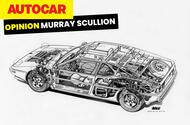New aero kit from Manthey makes track-focussed GT3 RS even more extreme
Manthey and Porsche produced an extreme aero kit for the 911 GT3 RS
Over the years, a few high-performance cars have emerged with monster whale-tail wings boasting various degrees of downforce.
Quite often the pressure they exerted was impressive if not necessarily mind-boggling and often they were intended more to neutralise lift than create positive downforce.
But these days, high-end sports cars have become faster than ever and, with it, the potential for aerodynamic downforce has increased.
For example, Porsche recently announced a new Manthey kit for the current 911 GT3 RS. A collaboration between the Porsche Development Centre at Weissach and Manthey, it’s aimed at on-track driving and the numbers generated are more than a mere nod to motorsport technology.
At 177mph, the modified aerodynamics of the GT3 RS literally produce a tonne of downforce: 1000kg. Equally impressive is how the car copes with extra load equivalent to roughly the weight of a black rhino. So how’s it done?
Starting from the rear, the huge carbonfibre wing has larger end-plates and the diffuser is wider, with longer carbonfibre fins.
Diffusers accelerate the air beneath the car to reduce pressure, which draws the car down towards the Tarmac and, in cars capable of this pace, that makes a big difference.

The rear window has been replaced by a carbon panel with large shark fin, which saves 25kg. The fin emulates that of Porsche’s highly successful 963 LMDh race car and improves cornering stability at high speed.
It also works in conjunction with six roof fins to divert hot air leaving the radiator away from the engine’s air intake area.
Radical changes at the rear are one thing but the front has to follow suit for the package to work.
The front spoiler profile has been redesigned to increase downforce and additional carbonfibre reinforcements support it.
Other details include redesigned wheel-arch flaps and ‘dive planes’ either side of the nose, which contribute to smoother aerodynamics around the wheel area as well as downforce.
So much for the raft of drag and downforce devices, but there’s still the question of all that extra load on the chassis when nudging maximum speed.
The spring rates of the semi-active suspension have been increased by 30% on the front axle and 15% on the rear.
Four wheel sensors and three body acceleration sensors add speed and sharpness to the damper tuning and the dampers themselves are new, with two separate valves for compression and rebound.
In Track mode, there are rotary controls on the steering wheel to make manual tweaks to the set-up.
The net result, says Porsche, is significant on track, with less dive, pitch and roll, and the improvements are especially effective in medium-speed corners.
Source: Autocar RSS Feed


